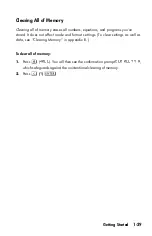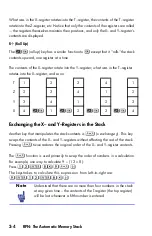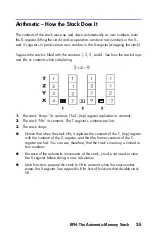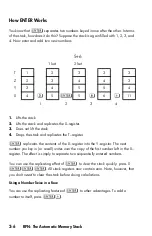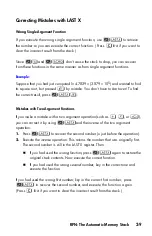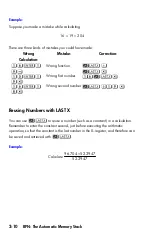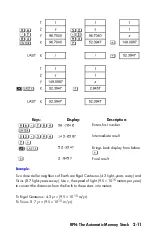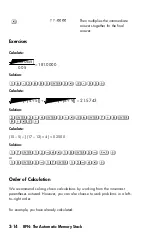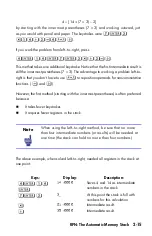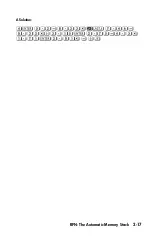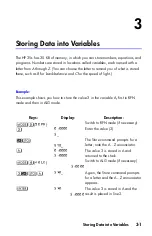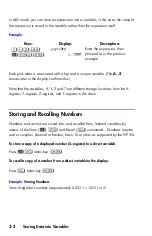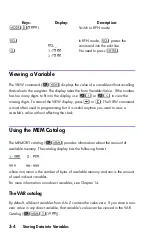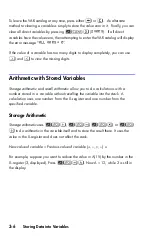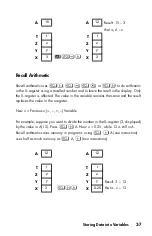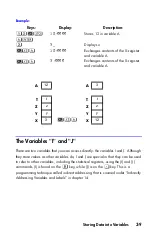
RPN: The Automatic Memory Stack
2-13
Now study the following examples. Remember that you need to press
only
to separate sequentially-entered numbers, such as at the beginning of an
expression. The operations themselves (
,
, etc.) separate subsequent
numbers and save intermediate results. The last result saved is the first one retrieved
as needed to carry out the calculation.
Calculate 2
÷
(3 + 10):
Calculate 4
÷
[14 + (7
×
3) – 2] :
Problems that have multiple parentheses can be solved in the same manner using
the automatic storage of intermediate results. For example, to solve (3 + 4)
×
(5 + 6)
on paper, you would first calculate the quantity (3 + 4). Then you would calculate (5
+ 6). Finally, you would multiply the two intermediate results to get the answer.
Work through the problem the same way with the HP 35s, except that you don't
have to write down intermediate answers—the calculator remembers them for you.
Keys:
Display:
Description:
Pressing the function key produces the
answer. This result can be used in
further calculations.
Keys:
Display:
Description:
Calculates (3 + 10) first.
Puts 2
before
13 so the division is
correct: 2
÷
13.
Keys:
Display:
Description:
Calculates (7
×
3).
Calculates denominator.
Puts 4
before
33 in preparation for
division.
Calculates 4
÷
33, the answer.
Keys:
Display:
Description:
First adds (3+4)
Then adds (5+6)
Summary of Contents for 35s
Page 1: ...HP 35s scientific calculator user s guide H Edition 1 HP part number F2215AA 90001 ...
Page 14: ...12 Contents ...
Page 15: ...Part 1 Basic Operation ...
Page 16: ......
Page 46: ...1 30 Getting Started ...
Page 63: ...RPN The Automatic Memory Stack 2 17 A Solution ...
Page 64: ...2 18 RPN The Automatic Memory Stack ...
Page 74: ...3 10 Storing Data into Variables ...
Page 180: ...12 14 Statistical Operations ...
Page 181: ...Part 2 Programming ...
Page 182: ......
Page 246: ...15 12 Solving and Integrating Programs ...
Page 270: ...16 24 Statistics Programs ...
Page 284: ...17 14 Miscellaneous Programs and Equations ...
Page 285: ...Part 3 Appendixes and Reference ...
Page 286: ......
Page 308: ...B 8 User Memory and the Stack ...
Page 322: ...C 14 ALG Summary ...
Page 336: ...D 14 More about Solving ...
Page 346: ...E 10 More about Integration ...
Page 352: ...F 6 Messages ...
Page 370: ...G 18 Operation Index ...
Page 382: ...Index 12 ...

